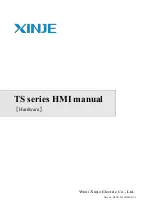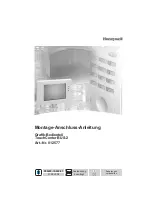
CF 126
15
Nov 2001
Example
If “#00
F6
↵
“ is sent when limits 02 and 04 are activated, the reply will be “10.”
Reply
The floating-point value in the reply is created by adding together the values for each
activated limit as shown below.
Limit number Value
01 1.
02 2.
03 4.
04 8.
05 16.
06 32.
07 64.
08 128.
09 256.
10 512.
11 1024.
12 2048.
13 4096.
14 8192.
15 16384.
16 32768.
This command does not apply to instruments not equipped with limits, such as the DFI
1550.
F8
Clear Latched Limits
Purpose
Deactivate all latched limits
Usage
“
aa
F8
↵
”
# is the 'pound' or 'hash' character (ASCII decimal 35).
aa is the two-character instrument address.
↵
is the 'carriage return' character (ASCII decimal 13).
Example
“00
F8
↵
”
Reply “
OK
” or “
N/A
”
Remarks
Manually deactivates a limit that has been activated and has its “
LIMIT.LATCHING
”
menu
item set to “
ON”
. Latched limits may also be cleared by pressing the front panel [CLEAR]
button or by using the Function Input #2 pin on the rear panel System Connector.
This command does not apply to instruments not equipped with limits, such as the Model
DFI 1550.
FI
Display Received Characters
Purpose
Display text momentarily on the display.
Usage
#
aa
FI
n
↵
”
# is the 'pound' or 'hash' character (ASCII decimal 35).
aa is the two-character instrument address.
n is the text to be displayed.
↵
is the 'carriage return' character (ASCII decimal 13).
Example
“#
00FIHELLO WORLD
↵
”
Reply “
OK
”
Remarks
Lower case characters are converted to upper case characters.
The text stays on the display for about 3 seconds.
This function can be used to verify that serial communications to the instrument is
working. For RS-232 instruments, using this command can ensure that the "GND" and
"TXD" pins on the computer are properly connected to the instrument.
This command does not apply to the DFI 1650.
















































